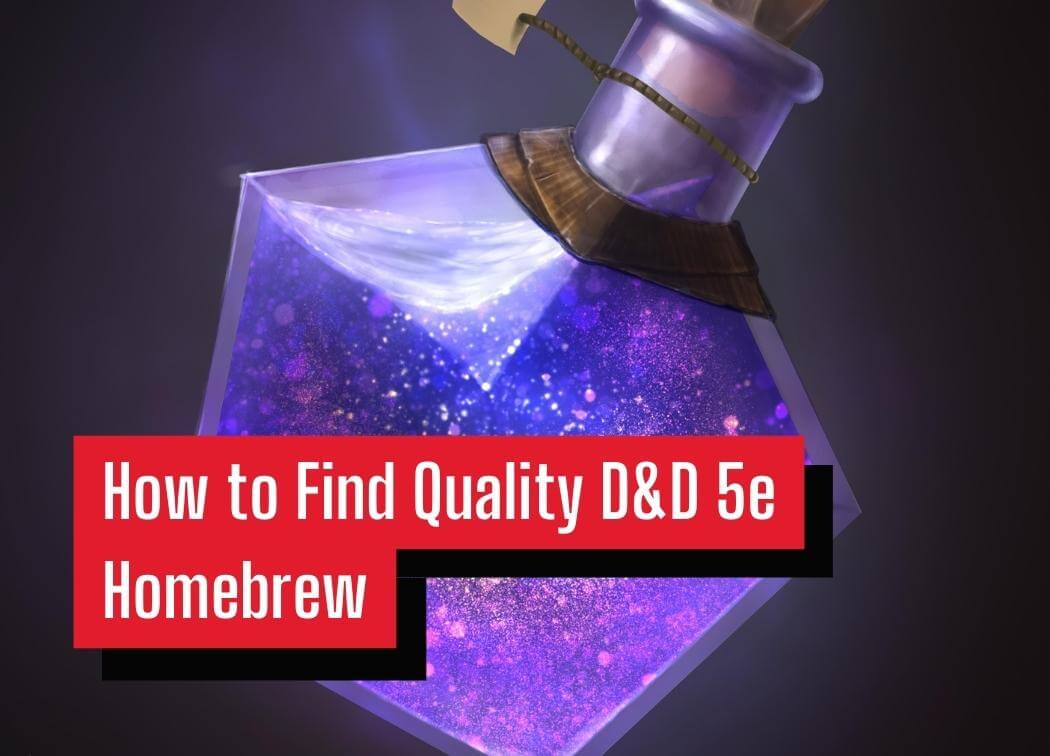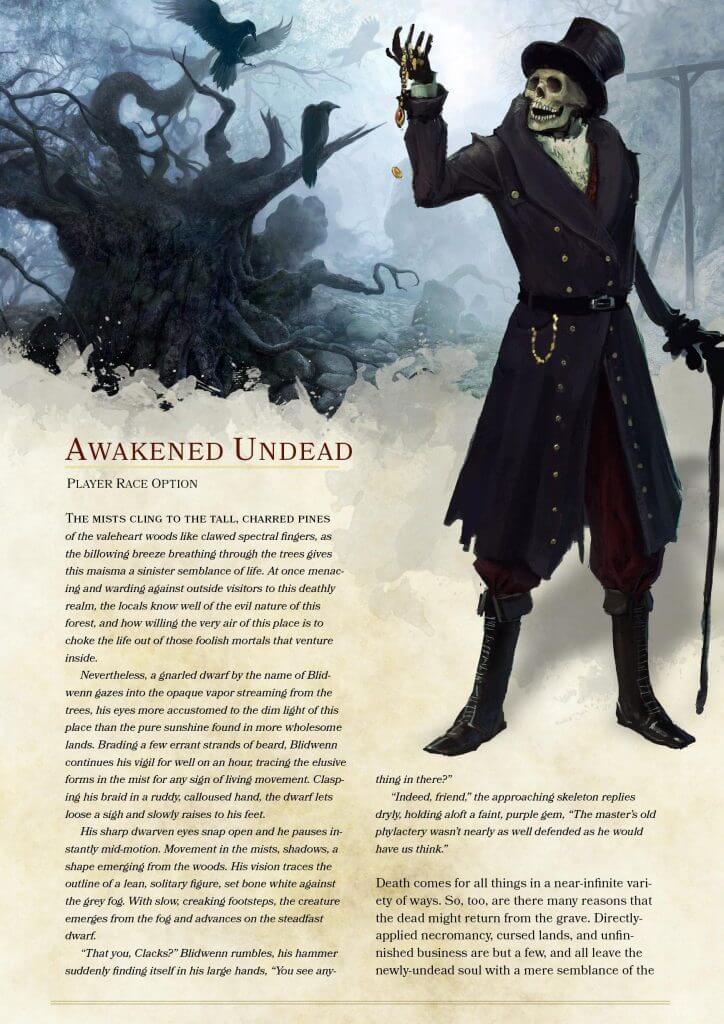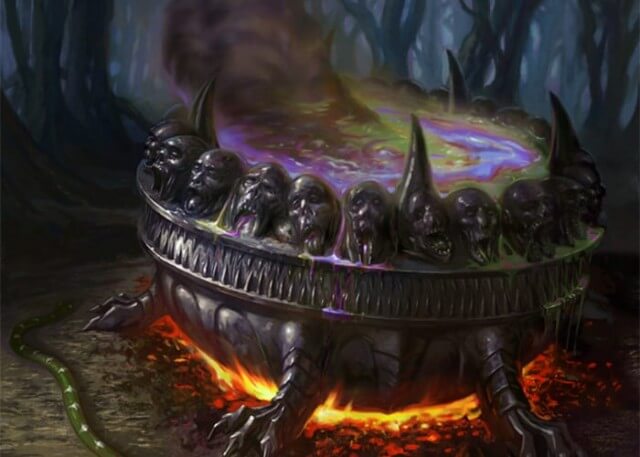How to Find Quality D&D 5e Homebrew

As my friends and I have become more comfortable with D&D 5e we have started using and creating more homebrew content for our games. This is a natural part of any tabletop RPG as homebrew content and systems help you and your friends craft the game and characters that you want to play.
Let’s face it, sometimes the rules and the source material don’t cover every interesting option. It’s up to you and the community to then create materials to cover these options and mechanics as they come up.
The good thing is that the D&D 5e homebrew community is enormous. Check out Reddit, Twitter, Pinterest, or any other social media platform and you’ll find tons of homebrew races, classes, archetypes, feats, backgrounds, items, and everything else relevant to D&D 5e.
If you have an idea for a character or a monster someone has probably made it already! All you have to do now is find it in this sea of homebrew.
This post is going to give you tips on how to find and identify quality 5e homebrew. There are tons to pick from and as you can imagine a lot of is pretty poorly balanced, nonsensical, or just plain bad.
When Should You Use Homebrew?
5e homebrew should add something to the game that is missing from the source material. This could be a mechanic, class, or race that gives your players an option to create a unique character. It could also be a cool item or monster for the DM to use. Anything in D&D 5e can be homebrewed, but not everything should be homebrewed and not every game should include it.
The homebrew content you want to use or have your DM include should fit the overall theme of the game. If your group wants to run a low-magic fantasy game you shouldn’t be asking about using a futuristic gun-lugging homebrew class. Read the room.
On the other hand, if you have this awesome idea for a skeleton wizard you should bring that homebrew race to your DM. This is where homebrew is valuable and precisely the time to use it. You had an idea for a unique character, but the source material doesn’t have anything that works well with it. You brought the homebrew you found to your DM and you both think it is well-made. Everyone wins.

Advice for New Players and/or DMs on Using Homebrew
For your first time playing D&D 5e, you should stick with the basics. There is a ton to take in as a new player. Adding a custom homebrew class or archetype on top of that can make the learning curve even steeper. Learn the game first, and then continue to add complexity to it as you all play more.
Creating your own homebrew items is very fun and can make your game feel unique to your players. However, if you don’t know what you’re doing I’d recommend using some premade items from the Dungeon Master’s Guide or a different book first. This is a great way to see how items interact with the game as well as how your players use the items. Get ideas and understand the mechanics before you hit the ground running!
If your DM is new to the game and you’re not I’d recommend going easy on them and picking something from the books or a well-trusted homebrew source. They have a lot on their plate and you should try your best to not make the game more complicated for them on their first time.
What is Bad Homebrew?
With this quantity of homebrew available to us, the majority of it is pretty bad. That’s just how creating content works. When tons of people take a stab at making something brand new, it will most-likely be god-awful the first few times as they learn. I’m absolutely no exception to this rule as I’ve shown before.
For an example of notoriously bad homebrew content check out dandwiki.com’s 905 homebrew classes. I’m sure there are some decent options in that giant pile of garbage, but the vast majority of it ranges from completely broken to nonsensical.
The unfortunate thing is that when a new player or DM googles “D&D 5e homebrew” there’s a good chance they’ll find D&D Wiki and assume that its content is useful or trustworthy. This is not the case, and this showcases why learning how to spot bad homebrew is going to be important for your future games.

Why is Quality Homebrew Important?
Balance.
Having balance in your game is great for encounter design and making the game run smoothly. However, ensuring that your homebrew is balanced against the DM’s creatures and encounters is not the most important part of finding quality homebrew. A good DM will be able to work around that unless it’s some ridiculously broken homebrew.
The most important part is ensuring that your homebrew content is not so unbalanced that it will outshine the rest of the party. Being in a game where one person is essentially a broken god and the rest of the group have to sit there and watch is awful. Your characters will all have their own roles and should all have their time in the spotlight. Homebrew that is broken enough to take this away from the others is an enormous issue.
Quality homebrew will give you a way to create a character or creature in D&D that’s both fair and unique. It should not sacrifice balance to make it more unique. Conversely, if a homebrew is too bland but extremely well-balanced there probably isn’t much value to using it. Homebrew should add a lot of flavor to a game.
This is why it’s both important and difficult to find quality 5e homebrew content. It has to add a lot to the game, but it can’t sacrifice the soul of the game to do so.
How to Find Great 5e Homebrew
I have a few easy tricks for finding great homebrew content.
Reputable Source
Finding a person or a group of people with a reputation for creating great homebrew content is the easiest way to finding great 5e homebrew. These people have released a lot of homebrew content with the majority of it being quality stuff. If they have a reputation for making good stuff, chances are they make good stuff.
A lot of these homebrewers will engage with the community as well. This is another great sign that they are both great at what they do and will create homebrew content that the community wants. A great example of a person like this is Death by Mage.
Having published or unpublished content for sale that is well rated and reviewed is also a great sign that they make quality material. Published content especially would have had to go through lots of editing and play-testing before it was released and the fact that it got good reviews and ratings seals the deal. Kobold Press is a great example of makers of quality homebrew content.
I’ve mentioned previously in this post that communities on social media platforms are great potential sources to find 5e homebrew content. The Unearthed Arcana subreddit generally has some great stuff as well as work-in-progress content. It’s a great place to both find good homebrew material as well as learn how to create your own. It’s also a great place to get feedback on your D&D 5e projects.
Play-Tested Content
Another group’s content that I love is Middle Finger of Vecna they regularly put out amazing 5e homebrew content that fills an interesting niche and is generally well-balanced. Part of the reason they’re able to do this is that they have so much experience with creating homebrew.
In my opinion, the primary reason that their homebrew content is so great and is easily-trusted is because of how much effort they put into play-testing their homebrew content before it’s released. They spend tons of time honing their content and ensuring that it is both fun to play and mechanically balanced for D&D 5e.
This can be said for all homebrew content. If you’re serious about releasing something, especially a big release such as an adventure or a class, you should play with it a few times. Get some friends together and play with your content in some different scenarios. Make your changes to fix the issues that come up during your play-testing and then release it.
The Creator Continues to Update It (If Need Be)
This is a great sign that the creator has intentions to continue to make the homebrew better until it is perfect. Play-testing is important because nothing is going to be completely balanced and devoid of issues on your first try. However, you also can’t expect creators to be able to play-test every single interaction in the game. There are going to be bugs and issues with a lot of homebrew content.
A lot of homebrew starts off as something that a group used in a home game. Maybe it gets tweaked before it was released to the public depending on how experienced/serious the homebrewer is. If they are receptive to comments and criticism and continue to improve the homebrew’s design over time it becomes a more complete product.
For the record, Wizards of the Coast also releases updates to their content so it’s not something that only homebrewers should be doing. If you find an issue with your content go and fix it to the best of your ability. This is a great way to build credibility as a content creator; be it a creator of source material or homebrew content.
Conclusions
Personally, I’ve found the easiest and least game-breaking things to homebrew are monsters, items, class archetypes, races, and minor character customization options like backgrounds and feats. Classes are by far the hardest thing to get right as many times they have unique resources and mechanics. As a rule of thumb, the more unique variables in a homebrew, the more likely it is going to have a balance issue.
Try to find sources that create quality homebrew content. Finding these people, groups, and communities helps you to learn what good quality homebrew looks like. When you find a trusted source it’s also a way to be able to be confident that you can use the stuff they make in your games and show it to your players.
Homebrew is great and it is an integral part of the enjoyment of D&D and tabletop RPGs in the long-run. Learning how to pick out quality homebrew content is a learned skill, but necessary for the integrity of your games.
